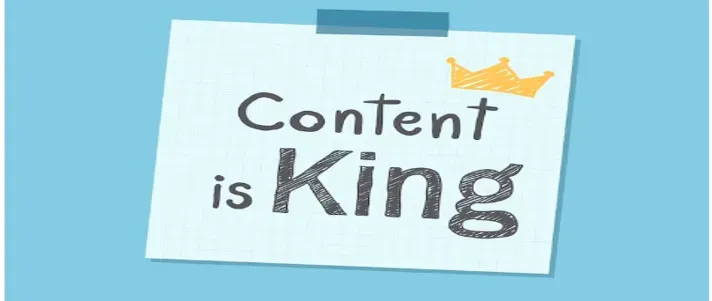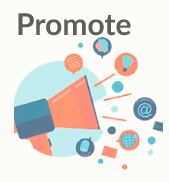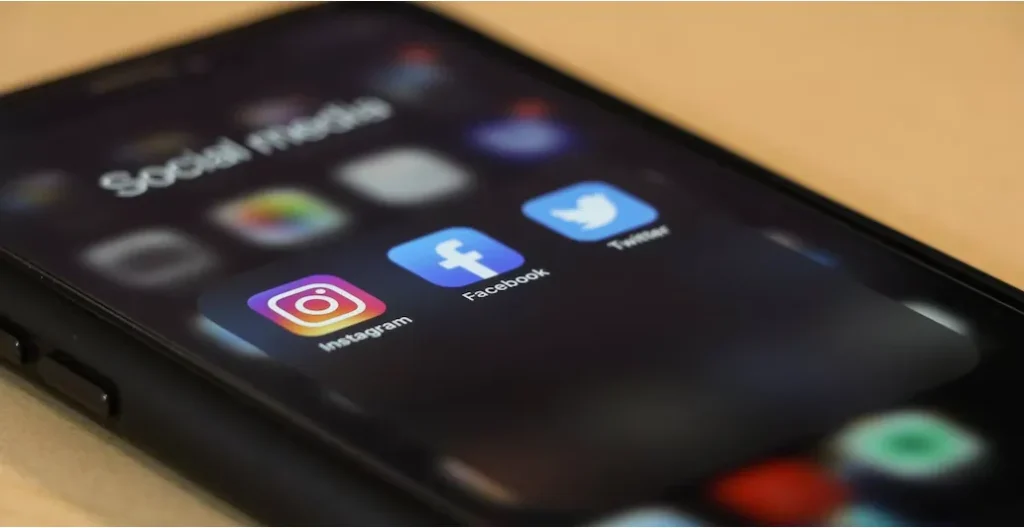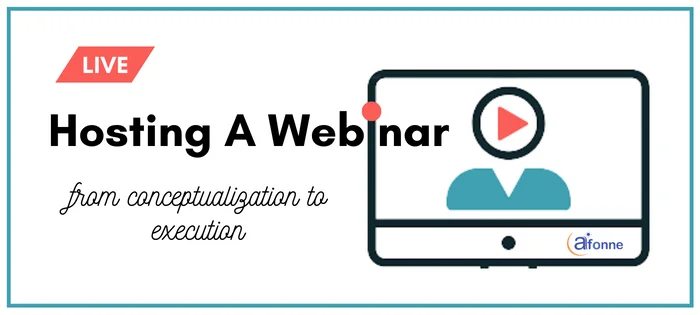Hosting a Webinar: From Conceptualization to Execution
Have you ever found yourself on the brink of a big idea, entertaining the possibility of hosting a webinar, but felt the cold tendrils of uncertainty wrapping around you, leaving you frozen and unsure of where to begin? If you’ve been on this precipice, wavering between action and inaction, I have good news for you.
Today, we will be unfurling the vast expanse of knowledge on the art and science of hosting a successful webinar.
From identifying the core purpose and target audience of your webinar, to intricately designing compelling content, setting up seamless technology, creatively promoting your event, and, finally, delivering an engaging, impactful presentation that will resonate with your audience, we will guide you every step of the way.
This isn’t a labyrinth of technical jargon or a castle built of fluffy, impractical advice; instead, it’s a pragmatic, humanized, comprehensive map drafted by industry veterans and experts in digital communication, designed to guide you on your journey to becoming an exemplary webinar host.
Now, brace yourself, because we’re about to embark on a voyage into the world of webinars, a journey that will transform you from a novice to a pro.
Chapter One: Conceptualizing Your Webinar

A Purpose-Driven Approach
Before we start to design or promote our webinar, it’s crucial to recognize its raison d’être – its reason for existence.
What is the main objective of your webinar?
- Is it to educate your audience on a particular topic,
- perhaps to showcase a product,
- or to establish your brand as an authority within your field?
- Are you looking to build customer loyalty,
- or are you interested in generating qualified leads?
Understanding your webinar’s purpose is the cornerstone of your planning process.
It serves as a compass guiding the direction of your content, design, promotion, and presentation.
Without a clearly defined purpose, your webinar risks becoming a rudderless ship lost at sea. And you don’t want that.
To identify the purpose of your webinar, you will want to also ask yourself critical questions and engage in deep introspection about your goals and aspirations.
- What are you hoping to achieve from this webinar?
- What impact do you want to have on your audience?
This phase of the process requires time, thoughtfulness, and honesty.
But don’t worry – as we delve deeper into the process, you will realize the value of understanding your purpose.
It’s an investment that yields considerable returns.
And the good news is that you probably already know it all along, in fact, there’s every chance that that’s even why you wanted to host a webinar in the first place.
A good approach to identifying the purpose of your webinar, apply the SMART goal framework: Your purpose should be Specific, Measurable, Achievable, Relevant, and Time-bound.
For example, if you’re a marketing consultant, a specific goal could be “Educate 50 small business owners about the latest SEO techniques within the next two months.”
Chapter Two: Who’s Watching?

Identifying and Understanding Your Target Audience
Just as every ship needs a compass, every webinar needs a target audience.
Your audience is the heart of your webinar – the people who will be investing their time and attention in what you have to offer.
Understanding who they are, what interests them, their pain points, and their expectations is crucial to the success of your webinar.
This understanding will help shape your content, your presentation style, and the way you promote your webinar.
Identifying your target audience involves a series of strategic steps.
It starts with analyzing your current customer base, then diving deeper into the demographics, psychographics, and behavioral trends of these individuals.
Depending on the scale you intend for your webinar, market research, and customer surveys can also play a vital role in this process, providing valuable insights into the preferences and behaviors of your potential attendees.
Using tools like Google Analytics or Facebook Insights, you can learn about your existing audience’s demographics and interests.
Conduct surveys or polls to gather more insights and craft a comprehensive profile of your ideal webinar attendee.
Chapter Three: Content is King

Designing an Engaging Webinar
With a firm understanding of your webinar’s purpose and your target audience, you’re now ready to design your webinar content.
This, and how you handle the presentation, is where the magic happens – where you craft your narrative, bring your ideas to life, and truly engage your audience.
When designing your webinar, think about what you want to share and how you want to share it.
A successful webinar is not just about delivering information; it’s about creating an engaging and immersive experience.
The structure of your content, the visuals you use, the stories you tell, and the interaction you encourage all contribute to the overall experience.
Remember, it’s not just about the ‘what‘, it’s also about the ‘how‘.
How will you present your information in a way that resonates with your audience, holds their attention, and motivates them to action?
The structure of your webinar could follow a format like this:
- A brief introduction about you and your topic.
- The main content, is divided into digestible segments.
- Interactive activities, like polls or quizzes boost audience engagement.
- A Q&A session.
- A conclusion summarizing key takeaways and next steps.
Remember to incorporate visual aids like slides, infographics, or videos to supplement your presentation.
Chapter Four: The Tech Factor

Setting Up for a Seamless Webinar
When it comes to conducting a successful webinar, quality content is only half the equation. The other, equally critical half is the technology that delivers your content to the audience.
Today, the virtual world is our stage, and technology is our enabler, ensuring we can reach out, engage, and inspire attendees from across the globe.
However, the double-edged sword of technology can either create a bridge, facilitating a seamless experience for your audience, or form a barrier, leading to frustrated attendees, interruptions, and ultimately, a compromised webinar experience. Thus, it is absolutely essential that you master the tech aspect of your webinar.
Selecting the Right Webinar Platform
Your webinar platform is the backbone of your event. It’s the virtual conference room where your attendees will gather. Hence, selecting a robust, user-friendly platform is paramount to the success of your webinar.
Every platform comes with its unique set of features, and it’s crucial to understand what you need. Some platforms might excel in attendee engagement features, such as polls and chats, while others may boast superior audio-visual quality or seamless integrations with marketing tools.
There are several great options out there, each with its pros and cons, and we’ve made the job easier for you with our comprehensive review and ranking of the best Webinar Hosting Software.
Understanding the Features
Once you’ve chosen your platform, dive deep into understanding its functionalities. Know how to navigate the interface, how to manage and interact with your audience, and how to use all the features that you intend to incorporate into your webinar.
Do a few dry runs and familiarize yourself with every nook and cranny of the platform. The smoother you can operate the technology, the more professional and polished your webinar will appear.
Testing the Audio and Video
When it comes to webinars, audio, and video quality can make or break the attendee experience. Conduct thorough tests of your audio and video systems well before your webinar date.
Check for audio clarity, video quality, and sync between audio and video. Use a high-quality microphone and camera to ensure the best possible output. If your webinar includes other speakers, ensure they also test their systems and meet the quality requirements.
Ensuring a Stable Internet Connection
Your internet connection is the lifeline of your webinar. A stable, high-speed connection is a non-negotiable requirement for hosting a smooth, lag-free webinar.
Test your internet speed and stability multiple times before the event. As an extra measure, have a backup internet source available. Nothing spoils a webinar faster than a host who keeps freezing or dropping out because of a poor internet connection.
Preparing for Technical Contingencies
In the digital realm, technical glitches are par for the course, and having a contingency plan in place can save you from a lot of stress and embarrassment.
Prepare for possible technical issues by having a backup device, internet connection, and even a backup location, if possible.
Rehearse how to quickly resolve common issues like audio or video glitches, platform malfunctions, or sudden power outages.
Remember, the key to handling technical glitches is to stay calm, keep your audience informed, and resolve the issue swiftly.
By dedicating due attention to these technological aspects of hosting a webinar, you can ensure a smooth and professional experience for your attendees, and thus, greatly amplify the impact of your content.
Technology, when understood and managed well, becomes a potent ally in your journey toward hosting a successful webinar.
Chapter Five: Lights, Camera, Action!

Delivering an Unforgettable Presentation
As the curtain lifts, and you step onto the virtual stage, it’s your time to captivate your audience, not just with your knowledge but with the captivating storytelling of that knowledge.
This chapter is your guide to delivering a memorable, engaging, and impactful presentation. It’s the spotlight illuminating your path to becoming an unforgettable webinar host.
A successful webinar is a delicate dance between content, pacing, tone, engagement, interaction, and the vital ability to handle nerves. And so, we begin.
Pacing and Structure
The pace of your webinar can set the tone for attendee engagement. It’s important to balance providing valuable information without overwhelming your audience.
Start with an introduction that sets the stage, introducing yourself, the webinar’s agenda, and the key takeaways for the audience. The goal is to spark interest and give your audience a clear roadmap of the journey ahead.
As you progress into the heart of your presentation, be mindful of your pace.
- Too fast, and you might lose your audience in a flurry of facts.
- Too slow, and you risk losing their interest.
A tip here is to structure your webinar into manageable segments, each with a clear beginning, middle, and end, maintaining rhythm and allowing attendees to keep up with you.
Tone and Body Language
The tone you employ in your presentation can significantly influence the audience’s experience. In a virtual setting where face-to-face cues are missing, your tone becomes a vital tool to project sincerity, enthusiasm, and clarity.
Keep your tone conversational and warm, inviting your audience into the narrative rather than lecturing them. Enunciate your words clearly, vary your pitch and volume to emphasize points, and pause strategically to allow key points to sink in.
Your body language too, while seemingly trivial in a digital format, plays an equally significant role. Use your hands to emphasize points, nod to signify agreement during discussions, and maintain eye contact with the camera as if it were your audience.
Audience Engagement and Interaction
A one-sided monologue can quickly turn a vibrant webinar into a dull lecture. Encourage audience interaction by posing questions, conducting polls or quizzes, and inviting comments.
Platforms often have chat features where participants can post questions or observations. Use these to keep your attendees engaged and responsive.
Make sure to provide spaces for Q&A and discussions, allowing your audience to clarify their doubts, share insights, and feel heard. Your attendees aren’t just spectators; they’re active participants in your webinar journey.
Handling Nerves and Maintaining Attention
It’s perfectly normal to feel a jolt of nerves before you begin your webinar but remember, your audience is here to learn from you and is excited about the knowledge you’ll share. Channel those nerves into enthusiasm for your topic. Practicing deep breathing exercises can also help calm your mind.
To keep your audience’s attention, be expressive and energetic. Show your passion for your topic – your enthusiasm is infectious and will captivate your audience. Break up your presentation with engaging visuals, anecdotes, or short breaks to prevent fatigue and maintain interest.
Finally, don’t be afraid of making mistakes – they show your human side. If you stumble, laugh it off and move on. Authenticity builds connection, and your audience will appreciate your honesty.
In conclusion, delivering an unforgettable presentation is a skill that involves understanding your audience, engaging them in your narrative, and presenting your knowledge in an accessible and interactive way.
As you master these aspects, you’ll find your audience returning webinar after webinar, drawn by your charismatic and effective presentation style.
Step into your role as a webinar host with confidence, and let your journey to captivating hundreds and thousands with your unique voice begin.
Chapter Six: Echoing Far and Wide

Promoting Your Webinar
Finally, once your webinar is ready for showtime, you need to get the word out there.
No matter how great your webinar is, it won’t succeed if people don’t know about it.
Promoting your webinar effectively can amplify its reach, increase sign-ups, and ensure a higher attendance rate.
…
The stage is set, your content is honed to perfection, and you’re ready to deliver an unforgettable webinar.
However, the last and arguably most vital piece of the puzzle is still left to be placed – promotion.
From leveraging social media and email marketing to strategic partnerships and paid advertising, we will explore diverse strategies to ensure your webinar echoes far and wide and reaches the right ears.
The value of a well-planned promotional strategy cannot be overstated. It’s the beacon that guides your target audience to your webinar, lighting up their path to valuable knowledge.
This chapter dives into the labyrinth of promotional strategies, emerging with a chest of tools and tactics to ensure your webinar resonates across channels and finds its way to the screens of interested attendees.
We navigate through the realms of social media, email marketing, strategic partnerships, and paid advertising, charting a course designed to expand your webinar’s reach and maximize attendance.
Social Media

In the interconnected world of the 21st century, social media is your high-speed express train to your target audience. Platforms such as LinkedIn, Twitter, Facebook, and Instagram offer you direct access to millions of potential attendees.
Create intriguing posts or engaging short videos that give potential attendees a taste of what they can expect from your webinar. Use relevant hashtags to increase your visibility and invite shares, likes, and comments to amplify your reach.
Moreover, platforms like LinkedIn allow you to host events, providing a streamlined process for interested individuals to register for your webinar.
Don’t overlook the power of ‘stories‘ on Instagram and Facebook. Regular updates, countdowns, and teasers can create excitement and anticipation around your webinar. Remember, consistency is key in maintaining the momentum of your promotional activities on social media.
Email Marketing

Email marketing is another potent tool in your promotional toolkit. Start by sending an initial announcement to your email list, and follow up with reminders as the date of the webinar approaches.
Create an attention-grabbing subject line to increase your email open rates. The content of your email should be concise yet engaging, providing essential details like the webinar’s purpose, date, and how to register.
A pro tip is to segment your email list based on interests or past engagement and tailor your promotional emails to match these segments. This personalization can dramatically increase engagement and conversion rates.
Strategic Partnerships
Partnerships can propel your webinar to new heights by leveraging the power of shared audiences. Collaborate with industry influencers, thought leaders, or businesses that complement your niche.
Guest speakers are an excellent addition to your webinar. They not only enrich your content with diverse perspectives but also bring their followers, expanding your webinar’s reach.
Remember, a strategic partnership should be beneficial to all parties involved. It’s not just about what you stand to gain but also what you bring to the table.
Paid Advertising
Lastly, while organic reach is valuable, it often needs to be supplemented with paid advertising to extend your reach further. Platforms like Google, LinkedIn, Facebook, and Instagram offer detailed targeting options to ensure your ads reach the right demographic.
Ensure your ad copy is compelling and clearly communicates the value attendees will get from your webinar. A/B testing different versions of your ad can help optimize your campaign and get the most return on your investment.
Wrapping it all up, promotion is an integral part of your webinar’s success. A well-orchestrated symphony of various promotional strategies can amplify your webinar’s voice, ensuring it echoes far and wide, reaching not just a large audience, but the right audience.
With this arsenal of promotional tactics at your disposal, you are well-equipped to take your webinar from a faint whisper to a roaring crescendo, reverberating across the digital landscape.
Conclusion
Hosting a webinar is no small task, but with the right knowledge, guidance, and tools, it can be a powerful and rewarding experience.
This comprehensive guide is designed to provide you with the knowledge and confidence to host a successful webinar, from conceptualizing the idea, right through to its execution.
So now, as we reach the end of our journey, it’s your turn to take the helm.
Step into the role of the webinar host, and embark on your journey to connect, engage, and inspire your audience.
So, fear no more, as the road to hosting a successful webinar, once shrouded in uncertainty, is now illuminated with practical, actionable advice.
Armed with this guide, you are no longer a novice, but a prepared, confident future host, ready to embark on an exciting journey in the realm of webinars.
Frequently Asked Questions About HOW TO HOST A WEBINAR
You will need webinar software such as the ones outlined in this comprehensive list.
Test your equipment and software beforehand, create a detailed agenda, and provide a link to the webinar ahead of time.
Promote your webinar through email, social media, and other channels.
Structure your webinar with an introduction, main content, and a conclusion. Allow for pauses and questions throughout.
Use interactive elements such as polls and Q&A sessions. Keep the content relevant and engaging for your audience.

